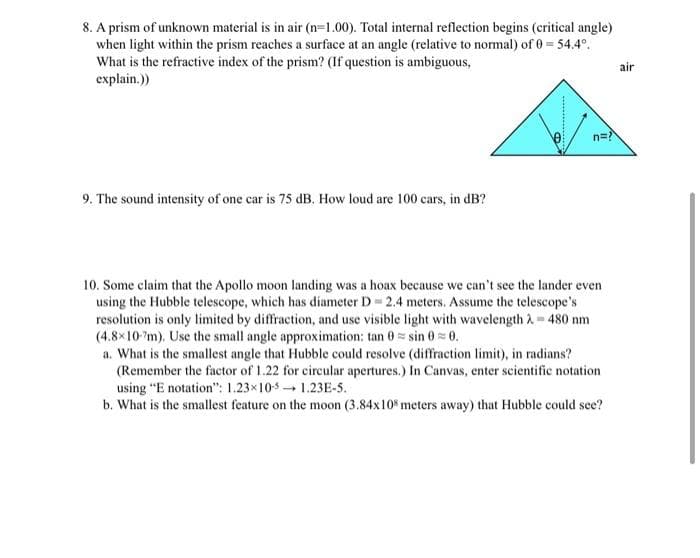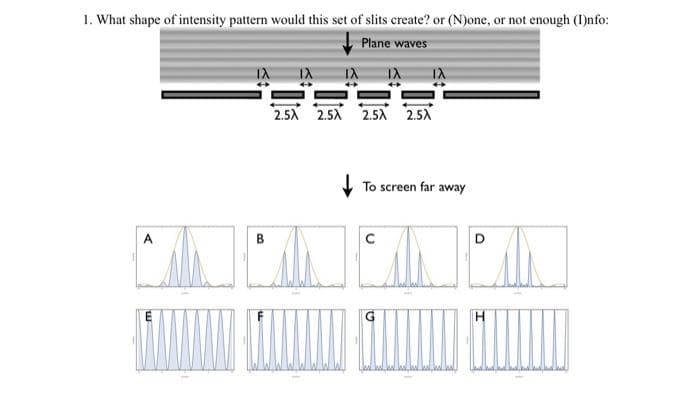8. A prism of unknown material is in air (n=1.00). Total internal reflection begins (critical angle) when light within the prism reaches a surface at an angle (relative to normal) of 0 54.4°. What is the refractive index of the prism? (If question is ambiguous, explain.)) air n=?
8. A prism of unknown material is in air (n=1.00). Total internal reflection begins (critical angle) when light within the prism reaches a surface at an angle (relative to normal) of 0 54.4°. What is the refractive index of the prism? (If question is ambiguous, explain.)) air n=?
Related questions
Question
Ans as you possible pls..

Transcribed Image Text:8. A prism of unknown material is in air (n=1.00). Total internal reflection begins (critical angle)
when light within the prism reaches a surface at an angle (relative to normal) of 0 54.4°.
What is the refractive index of the prism? (If question is ambiguous,
explain.)
air
n=
9. The sound intensity of one car is 75 dB. How loud are 100 cars, in dB?
10. Some claim that the Apollo moon landing was a hoax because we can't see the lander even
using the Hubble telescope, which has diameter D 2.4 meters. Assume the telescope's
resolution is only limited by diffraction, and use visible light with wavelength à 480 nm
(4.8x10'm). Use the small angle approximation: tan 0= sin 0= 0.
a. What is the smallest angle that Hubble could resolve (diffraction limit), in radians?
(Remember the factor of 1.22 for circular apertures.) In Canvas, enter scientific notation
using "E notation": 1.23x10s 1.23E-5.
b. What is the smallest feature on the moon (3.84x10 meters away) that Hubble could see?

Transcribed Image Text:1. What shape of intensity pattern would this set of slits create? or (N)one, or not enough (I)nfo:
Plane waves
2.5X 2.5A 2.SA 2.5A
To screen far away
A
Expert Solution
This question has been solved!
Explore an expertly crafted, step-by-step solution for a thorough understanding of key concepts.
Step by step
Solved in 3 steps
